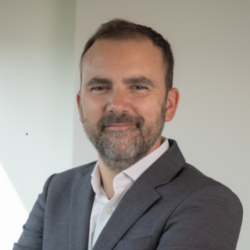What was your starting point when you took over procurement — and what needed to change?
When I first joined the team, procurement was mostly seen as a compliance function. The transformation program was the opportunity to reposition us — from enforcing process to shaping strategy. Having both group and operational procurement under one roof is unusual, but it gave us a strong base to influence across the company, covering more than 50% of total spend.
How is procurement positioned in the organization today compared to when you started , and what did it take to get there?
We’ve moved from a compliance-centered function to a strategic driver. That required a cultural reset — going beyond just structural changes.
Having a seat at the table now means not only participating in strategic discussions — but challenging them when needed, and bringing a stronger voice from procurement leaders who think and act like business partners.
This shift demanded a deep transformation in how procurement leads: shifting focus from enforcing processes to driving agility, co-creation and performance-driven leadership.
Innovation is a constant in TMT — what role should procurement play in it?
In our industry, innovation isn’t just about the next piece of technology. It’s about new commercial models, new ways of working with suppliers, and unlocking value from the ecosystem. Our role isn’t to replace R&D, but to bridge technical innovation and commercial execution.
What kind of skills and mindsets do you think procurement teams need for this role?
Beyond technical know-how, what really matters today are soft skills and mindset. Procurement professionals must be results-driven, capable project leaders, and above all, creative thinkers who question assumptions and challenge the status quo.
In fact, the biggest transformation lies in changing managerial postures. We still see too many managers stuck in process-heavy routines — effective negotiation and leadership today require boldness, adaptability, and the ability to inspire teams and partners.
That’s why we bring in talent from different backgrounds — procurement, business, operations — and encourage rotation and renewal. Staying in the same category or comfort zone for too long creates rigidity; what we need is movement, cross-pollination and fresh thinking.
How do you make sure procurement’s value is recognized?
By being transparent and disciplined. We only claim savings once Finance has validated them and they show up in business budgets. But it’s not just about cost — we also track risk management, sustainability, and we’re building ways to measure productivity and even top-line contributions, especially for new product launches. In one case we added for instance more than €10 million in value by rethinking how we source a core product category.
Sustainability expectations are rising fast — how do you address that?
We’ve launched a supplier decarbonization program with clear targets, milestones, and reporting. It’s not just a compliance tick-box; in TMT, it’s a differentiator. Suppliers that can move fast on sustainability will be our long-term partners.
If you could design the ideal set-up for procurement, what would it be?
In an ideal world, procurement sits at the Executive Committee table, alongside innovation and operations. That neutrality and visibility would enable better integration between supply chain, procurement, and innovation — and create even more value.





